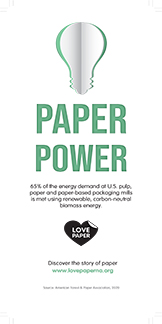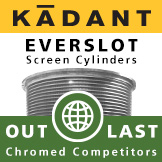In the journey towards sustainable development, the concept of a circular economy has gained significant traction. At the heart of this concept is the idea of reducing waste and continually reusing resources. In the paper industry, circularity is transforming how paper, paper-based packaging , and related products are produced, used, and recycled. Let's look at the circularity of paper products, focusing on packaging, marketing, and consumer goods, highlighting the industry's strides and challenges.
Getting Clarity on Circularity
Circularity, a paradigm-shifting economic model, stands in stark contrast to the conventional linear economy. While the linear economy operates on the principle of 'take, make, dispose,' circularity aims to eliminate waste and promote the continuous utilization of resources.
 A fully circular economy functions as a closed loop, ensuring that products and materials are constantly reused, refurbished, remanufactured, and recycled. This approach effectively minimizes environmental impact and resource consumption, leading to a more sustainable and resilient system.
A fully circular economy functions as a closed loop, ensuring that products and materials are constantly reused, refurbished, remanufactured, and recycled. This approach effectively minimizes environmental impact and resource consumption, leading to a more sustainable and resilient system.
The 'take, make, dispose' model of the linear economy has been the dominant economic model for much of the 20th and 21st centuries-since the industrial revolution. It involves the extraction of raw materials, manufacturing products, and ultimately discarding them as waste. This linear approach has led to significant environmental degradation, including resource depletion, pollution, and climate change.
Circularity offers an alternative to this unsustainable trajectory. By reusing, repairing, remanufacturing, and recycling products and materials, circularity keeps them viable for longer periods. This reduces the need for raw material extraction and manufacturing, thereby conserving resources and minimizing waste.
Furthermore, circularity promotes innovation and job creation. The development of new technologies and business models that enable circularity can create new economic opportunities and support sustainable growth.
The transition to a circular economy requires collaboration among stakeholders across the value chain. Governments, businesses, and consumers all have a role to play.
Paper's Role in the Circular Economy
The paper industry is a pioneer in embracing circularity. Paper products are inherently renewable, recyclable, and biodegradable, making them ideally-suited for a circular economy. The industry's commitment to sustainable forest management, efficient production processes, and robust recycling systems underscores its circularity credentials.
Sustainable Sourcing and Production
The paper industry's increasing commitment to sustainable forest management is a cornerstone of its circularity efforts. Responsible harvesting practices and reforestation initiatives not only safeguard biodiversity and ecosystems but also contribute to carbon sequestration, mitigating the effects of climate change.
Sustainable forestry practices ensure that the raw material for paper products, wood, is sourced responsibly. This involves managing forests to maintain biodiversity, productivity, and ecological processes. Globally certified forestry programs like the Forest Stewardship Council (FSC), Sustainable Forestry Initiative (SFI) and the Programme for the Endorsement of Forest Certification (PEFC) play a crucial role in this regard.
Efficient Production Processes
Modern paper mills work to constantly to minimize waste and energy consumption. Innovations such as closed-loop water systems, efficient machinery, and the use of renewable energy sources are standard practices. These efforts help reduce the environmental footprint of paper production.
Collaborating on Circularity
Recycling is a cornerstone of the paper industry's circular economy model. Paper products can be recycled 5 to 7 times, reducing the need for virgin materials and the associated environmental impact.
The industry collaborates with waste management companies, governments, and consumers to ensure that used paper products are collected, sorted, and processed back into new paper products. This recycling infrastructure enables the continuous reuse of valuable resources, diverting millions of tons of waste from landfills and incinerators. The recycling rate for paper in the United States is over 68%, one of the highest among recyclable materials.
The paper industry's commitment to circularity extends beyond its operational practices. By actively engaging with partners and stakeholders along the value chain, the industry fosters a collaborative approach to sustainability. This includes working with customers to design eco-friendly packaging solutions and educating consumers about the importance of responsible paper consumption and recycling.
In the Ring: Paper v. Plastic
Paper packaging exhibits a higher degree of circularity compared to plastic packaging due to several key factors:
Renewability
Paper is derived from trees, a renewable resource that can be sustainably managed through reforestation efforts. In contrast, plastic is mostly made from non-renewable fossil fuels.
Biodegradability & Compostability
Certain types of papers are biodegradable and compostable, meaning it can naturally break down into organic matter over time. This characteristic reduces the accumulation of waste in landfills and oceans, unlike plastic, which can persist in the environment for hundreds of years.
Recyclability
The paper industry has been investing in and improving paper recycling for decades. Paper has a high recyclability rate compared to plastic and it can be recycled multiple times, allowing for the recovery of fibers and the production of new paper products. Renewable virgin fiber is introduced to strengthen recycled products. Plastic, on the other hand, has shown to be more challenging to recycle, and often ends up in landfills or as litter.
Sustainable Sourcing
Paper packaging can be sourced from sustainably managed and certified forests, ensuring that trees are harvested responsibly and that biodiversity is protected. Plastic is often derived from petroleum products which are non-renewable and can contribute to climate change.
Plastic has a place for certain types of packaging, but by choosing paper packaging in the appropriate applications, companies can significantly contribute to a more circular economy, reducing waste, conserving resources, and promoting environmental sustainability.
Packaging: That's a (Paper) Wrap!
Paper packaging epitomizes circularity in action. It is designed to be recyclable, biodegradable, and often made from recycled materials. Packaging manufacturers are always innovating and collaborating on new solutions, and it's one area where paper emerges as a circular option..
Food Packaging
Paper and paperboard are widely used in food packaging due to their versatility and safety. Innovations in coating and barrier technologies have enhanced their performance, making them suitable for a wide range of food products. After use, many of these packages can be recycled or composted, reducing waste and environmental impact.
E-commerce Packaging
With the rise of e-commerce, the demand for sustainable packaging solutions has increased. Paper-based packaging offers a sustainable choice, providing protection and durability while being easy to recycle. Companies are increasingly adopting paper packaging to meet consumer demand for environmentally friendly options.
Marketing and Consumer Goods
Paper products are not limited to packaging; they are integral to marketing and various consumer goods. This section delves into the circularity of paper in these domains.
Printed Marketing Materials
Despite the digital shift, printed marketing materials remain relevant. The circularity of paper ensures that brochures, flyers, and posters can be produced sustainably and recycled after use. This minimizes waste and promotes a responsible approach to marketing.
Consumer Goods
Products such as notebooks, tissue paper, and cardboard furniture are examples of paper's versatility. These goods, when sourced and manufactured responsibly, contribute to the circular economy by being recyclable and biodegradable.
Challenges and Opportunities
While the paper industry has made significant strides towards circularity, challenges remain.
Contaminants in the recycling stream, fluctuating market demand for recycled materials, and the need for more advanced recycling technologies are areas that require ongoing attention and innovation.
Addressing these challenges presents opportunities for further innovation and improvement. Investing in research and development can lead to more efficient recycling processes and the creation of new, innovative paper products. Collaboration across industries and with policymakers can drive the development of standards and regulations that support a circular economy.
The Future of Paper in a Circular Economy
The future of paper in a circular economy is promising. As sustainability becomes a priority for businesses and consumers, the demand for circular products will grow. The paper industry is well-positioned to meet this demand through continuous innovation and a commitment to sustainable practices.
The circularity of paper, paper-based packaging, and related products is a testament to the industry's dedication to sustainability. From responsible sourcing and efficient production to robust recycling systems, the paper industry exemplifies how circularity can be achieved in practice. As we look to the future, the ongoing efforts to enhance the circular economy will ensure that paper products continue to play a crucial role in a sustainable world.
By embracing circularity, the paper industry not only minimizes its environmental impact but also sets a standard for other industries to follow. By embracing circularity, we can decouple economic growth from resource depletion and environmental degradation. A circular economy offers the potential for a more prosperous, equitable, and sustainable future.






















